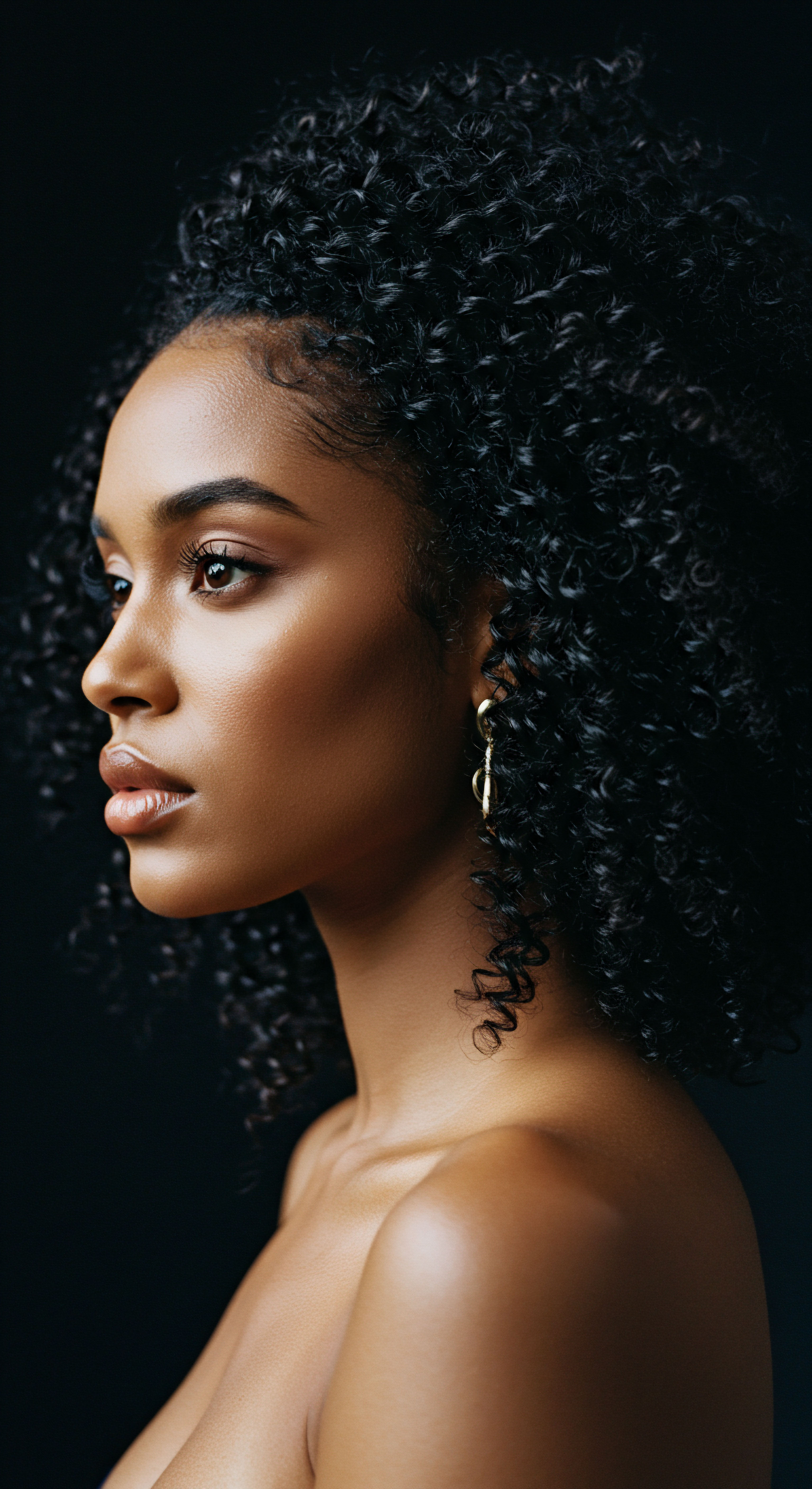
Roots
The very strands that crown us, particularly those with rich coil and curl, carry stories deeper than any single product can tell. They speak of lineage, of resilience, and of a profound connection to the earth’s giving spirit. As we seek to strengthen these delicate yet powerful fibers, our attention naturally turns to the botanical realm, where life itself finds its earliest expressions.
Plant proteins, drawn from the earth’s quiet abundance, offer a pathway to fortify textured hair, providing building blocks that resonate with its intrinsic structure. Understanding which of these green gifts truly serve our hair means looking beyond the surface, recognizing the subtle science at play within each strand and the historical whispers of wisdom that guide us.

Hair’s Inner Workings and Outer Presence
Hair, at its core, is a protein fiber, predominantly composed of keratin. This complex protein gives hair its strength, elasticity, and overall structure. For textured hair, the unique helical shape of the strand and the arrangement of its cuticle layers mean it possesses a distinct architecture. This architecture can sometimes render it more susceptible to dryness and breakage, making external support, particularly from proteins, a significant consideration.
The cuticle, the outermost layer of the hair, acts as a protective shield. When this shield is compromised by styling, environmental factors, or chemical treatments, the hair’s inner integrity becomes vulnerable.
Hair, primarily composed of keratin, requires external protein support to maintain its strength and resilience, especially for textured strands.
The journey of a hair strand begins within the follicle, nourished by the body’s internal systems. Its life cycle involves phases of growth, rest, and shedding. Factors like nutrition, stress, and even ancestral predispositions influence this cycle.
When we speak of strengthening hair, we are aiming to support its natural processes and fortify its physical composition. Plant proteins enter this conversation as external reinforcements, offering a gentle yet potent way to bolster the hair’s defenses and enhance its natural vigor.

The Plant Protein Lexicon for Hair
Navigating the world of hair care ingredients can feel like learning a new language. When it comes to plant proteins, certain terms appear frequently on ingredient lists, each hinting at a specific botanical origin and processing method.
- Hydrolyzed Proteins ❉ These proteins have undergone hydrolysis, a process that breaks them down into smaller fragments, such as peptides and amino acids. This reduction in size is critical, as smaller molecules are better able to penetrate the hair shaft, providing deeper reinforcement rather than simply coating the surface.
- Amino Acids ❉ The individual building blocks of proteins. When applied to hair, they can be absorbed to help repair and strengthen the strand from within.
- Peptides ❉ Short chains of amino acids. These are also small enough to enter the hair shaft, offering targeted benefits for strength and repair.
Understanding these distinctions helps us discern which plant proteins are most likely to provide meaningful structural support to textured hair. The molecular size of a protein plays a significant role in its ability to interact with the hair fiber. Larger proteins tend to sit on the surface, offering film-forming benefits and temporary smoothness, while smaller, hydrolyzed versions can work on a more fundamental level.
| Protein Size Category Very Small (Amino Acids, Peptides) |
| Typical Molecular Weight (Daltons) < 1,000 |
| Primary Hair Interaction Deep penetration into cortex |
| Benefits for Textured Hair Internal repair, increased elasticity, hydration |
| Protein Size Category Small (Hydrolyzed Proteins) |
| Typical Molecular Weight (Daltons) 1,000 – 5,000 |
| Primary Hair Interaction Penetrates cortex, some surface film |
| Benefits for Textured Hair Strengthening, moisture retention, reduced breakage |
| Protein Size Category Medium (Some Hydrolyzed Proteins) |
| Typical Molecular Weight (Daltons) 5,000 – 50,000 |
| Primary Hair Interaction Surface absorption, some cuticle penetration |
| Benefits for Textured Hair Film-forming, surface smoothness, protection |
| Protein Size Category Large (Intact Proteins) |
| Typical Molecular Weight (Daltons) 50,000 |
| Primary Hair Interaction Primarily surface coating |
| Benefits for Textured Hair Conditioning, temporary shine, moisture seal |
| Protein Size Category The effectiveness of a plant protein often correlates with its ability to reach deeper hair layers. |

Ritual
Stepping into the realm of practical application, we move from the quiet contemplation of hair’s inner structure to the intentional gestures that shape its daily life. Our hands, guided by wisdom both ancient and modern, become instruments of care, transforming simple botanical elements into strengthening elixirs. The daily or weekly rituals we observe are not merely tasks; they are acts of devotion to our strands, moments where the science of plant proteins meets the art of self-care. This section offers guidance on how to thoughtfully incorporate plant proteins into your hair care practices, honoring the unique needs of textured hair with gentle precision.
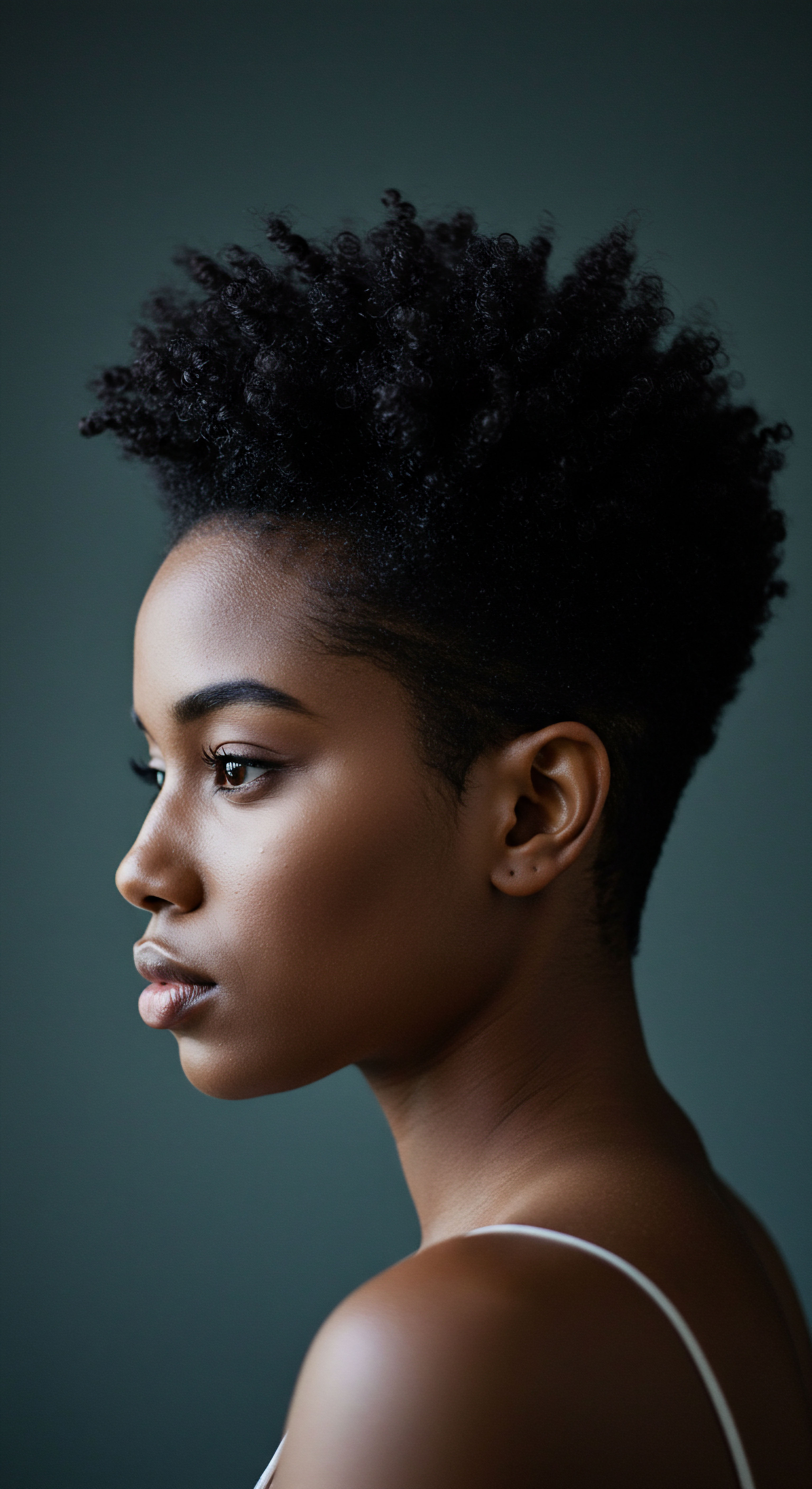
What Plant Proteins Offer Strength to Textured Hair?
Among the vast array of plant-derived proteins, a few stand out for their notable contributions to the strength and vitality of textured hair. Their effectiveness often stems from their amino acid profiles and their molecular size after hydrolysis.
- Hydrolyzed Wheat Protein ❉ This protein, when broken down into smaller peptides, has shown a capacity to penetrate the hair shaft, particularly in damaged hair. It helps to improve the hair’s ability to absorb and retain moisture, which is vital for textured strands that are prone to dryness. Studies indicate it can enhance tensile properties and reduce breakage.
- Hydrolyzed Soy Protein ❉ Derived from soybeans, this protein is known for its ability to condition hair, reduce flaking, and restore suppleness. It can improve hair’s moisture-binding properties and tensile strength, helping to mitigate damage from chemical processes. Soy protein is rich in amino acids essential for keratin production.
- Hydrolyzed Pea Protein ❉ A newer yet potent addition to hair care, pea protein is rich in amino acids like lysine and cysteine, which are crucial for hair strength and elasticity. It can help reduce breakage and improve the hair’s overall texture, making strands softer and more manageable. Its smaller molecular weight allows for deeper penetration.
- Hydrolyzed Rice Protein ❉ Often recognized for its ability to add volume and strength, hydrolyzed rice protein has a low molecular weight, allowing it to penetrate the hair shaft and rebuild damaged areas. It contributes to improved elasticity and overall hair health.
- Hydrolyzed Corn Protein ❉ This protein, rich in amino acids, helps to strengthen weakened strands and repair damage, particularly in chemically treated hair. It also helps to hydrate hair and retain moisture, leaving it softer and more supple. Its smaller peptides can penetrate the hair shaft effectively.

Crafting a Protein-Rich Hair Care Routine
Incorporating these plant proteins into a hair care regimen for textured hair involves thoughtful selection and mindful application. The goal is to provide beneficial reinforcement without overwhelming the hair, which can sometimes lead to a condition known as protein overload.
Thoughtful integration of plant proteins into hair care routines strengthens strands, requiring careful selection to avoid overwhelming the hair.
For individuals with high porosity hair, which often has raised cuticles and loses moisture quickly, hydrolyzed proteins can be particularly beneficial. They help fill gaps in the hair shaft, reducing porosity and improving moisture retention. Conversely, those with low porosity hair might find that smaller, more readily absorbed proteins or amino acids are preferable, as larger molecules might simply sit on the surface, leading to buildup.

Application Strategies for Plant Proteins
The manner in which plant proteins are applied can significantly influence their effectiveness.
- Pre-Shampoo Treatments ❉ Applying a protein-rich treatment before shampooing can offer a protective layer, minimizing the stripping effects of cleansing.
- Conditioners and Leave-Ins ❉ Many conditioners and leave-in products incorporate hydrolyzed proteins. Regular use can provide consistent reinforcement and hydration.
- Deep Conditioning Masks ❉ For a more intense treatment, protein-infused masks can be used periodically, allowing the proteins more time to interact with the hair. Applying gentle heat, such as with a warm towel or a heat cap, can encourage deeper penetration by slightly opening the hair cuticle.
It is important to observe how your hair responds. Signs of balanced protein use include increased strength, elasticity, and reduced breakage. If hair begins to feel stiff, brittle, or dull, it might signal an excess of protein, necessitating a shift towards more moisture-focused products.
| Hair Porosity Type Low Porosity |
| Characteristic Cuticles lie flat, resists moisture entry and exit. |
| Best Plant Proteins Amino Acids, Hydrolyzed Silk Protein, Hydrolyzed Rice Protein |
| Application Tip Use smaller molecules, apply with gentle heat to aid absorption. |
| Hair Porosity Type Normal Porosity |
| Characteristic Balanced moisture absorption and retention. |
| Best Plant Proteins Hydrolyzed Soy Protein, Hydrolyzed Wheat Protein |
| Application Tip Can benefit from a wide range, balance with moisture. |
| Hair Porosity Type High Porosity |
| Characteristic Raised cuticles, absorbs moisture quickly but loses it fast. |
| Best Plant Proteins Hydrolyzed Wheat Protein, Hydrolyzed Oat Protein, Hydrolyzed Corn Protein |
| Application Tip Benefits greatly from proteins that fill gaps and reduce porosity. |
| Hair Porosity Type Tailoring protein choices to hair porosity optimizes strengthening benefits. |

Relay
As we move from the tangible rituals to a deeper contemplation, we begin to appreciate the intricate dance between botanical compounds and our hair’s very being. This is where the wisdom of ancestral practices converges with the precise insights of modern science, illuminating not just what to use, but why it truly matters. The strengthening of textured hair with plant proteins is not a simple transaction; it is a nuanced conversation between the molecular world and our lived experience, influenced by legacies both seen and unseen.

Do Smaller Protein Fragments Truly Offer Superior Strengthening?
The efficacy of plant proteins in fortifying textured hair often hinges on their molecular size. For decades, the prevailing understanding in cosmetic science has held that proteins must be broken down into smaller fragments, or hydrolyzed, to penetrate the hair shaft effectively. Large, intact protein molecules, while capable of coating the hair’s surface and providing temporary conditioning, generally do not possess the ability to enter the inner cortex where true structural reinforcement occurs.
A study published in the Journal of Cosmetic Science (2000) by Swift and colleagues, investigating the penetration of hydrolyzed wheat proteins into human hair using confocal laser-scanning fluorescence microscopy, offers compelling visual evidence. Their research showed that hydrolyzed wheat proteins, with a molecular weight distribution primarily below 1,000 daltons, extensively penetrated the hair fiber. The main sites of occupation for these peptides were found to be the endocuticle and within the cortex, specifically in the nuclear remnants and intermacrofibrillar matrix.
This visual confirmation challenged simpler notions, underscoring that smaller peptides do indeed go beyond surface conditioning, reaching the core structures that contribute to hair’s mechanical properties. This contrasts with larger proteins, which tend to adsorb onto the hair surface or penetrate only the outermost layers.
The implication for textured hair is significant. Given its often more open cuticle structure, particularly when damaged or highly porous, the potential for smaller hydrolyzed proteins to enter and provide internal support is enhanced. This ability to interact directly with the hair’s internal keratin network means these plant-derived fragments can help fill in compromised areas, lending resilience from within.

Understanding Protein Overload in Textured Hair
While plant proteins offer immense benefits, a common misstep in hair care, particularly for textured strands, is the phenomenon of protein overload. This condition, where hair receives an excessive amount of protein without adequate moisture, can paradoxically lead to symptoms similar to damage, such as dryness, stiffness, and increased brittleness.
The issue arises because proteins, especially larger ones, can build up on the hair’s cuticle. While a protective film is beneficial, an excessive layer can create an impermeable barrier, preventing moisture from entering the hair shaft. This imbalance can disrupt the hair’s natural elasticity, making it more prone to snapping rather than stretching. Textured hair, already prone to dryness, can be particularly susceptible to this imbalance.
An overabundance of protein without sufficient moisture can lead to hair stiffness and breakage, a state known as protein overload.
This highlights a crucial point ❉ the quest for strength must always be balanced with the need for hydration. Hair requires both protein for structure and moisture for flexibility. A truly beneficial regimen for textured hair considers this delicate equilibrium, adjusting protein treatments based on the hair’s feel and responsiveness.
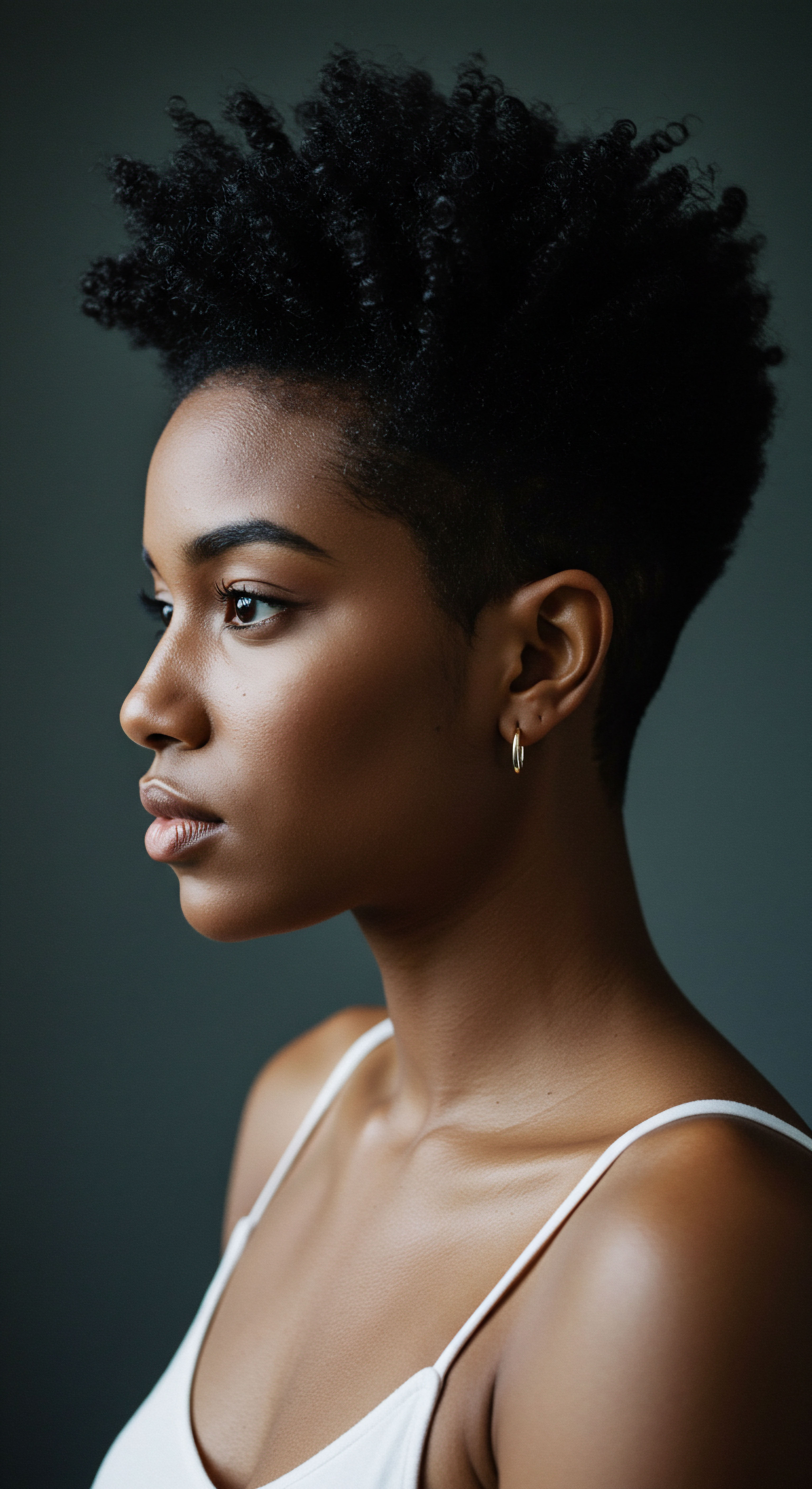
Plant Proteins Beyond Strength ❉ A Wider Lens
The contribution of plant proteins to textured hair extends beyond mere structural reinforcement. They also carry historical and cultural weight, reflecting practices that predate modern cosmetic science. Ancient traditions from various cultures, including those in India and parts of Africa, have long incorporated plant-based elements for hair care.
For instance, the use of rice water in East Asian and Southeast Asian cultures for hair health has been documented for centuries, a practice now supported by understanding the benefits of its proteins and other components. Similarly, the use of certain plant extracts in Ayurvedic practices for hair growth and scalp health speaks to a long-standing intuitive understanding of botanical benefits.
Moreover, certain plant proteins, like those from soy, have been investigated for their broader impact on hair health, including potential effects on hair growth. A case series examined the effectiveness of black soybean extract applied topically to the scalp. After 12 weeks, participants showed a significant decrease in the average number of lost hairs (from 140.7 to 38.8, p = 0.002) and a statistically significant increase in hair diameter (from 72.4 µm to 80.4 µm, p = 0.022).
While this was a small case series and further placebo-controlled trials are needed, it hints at the multifaceted benefits of plant compounds, extending beyond direct strand strengthening to broader scalp health and hair density. This connection to internal wellness and scalp vitality elevates plant proteins from simple conditioning agents to holistic contributors to hair well-being.
The journey to truly understand which plant proteins best strengthen textured hair strands is not a straight path. It winds through molecular science, personal observation, and the echoes of generations past, all converging to paint a more complete picture of vibrant, resilient hair.
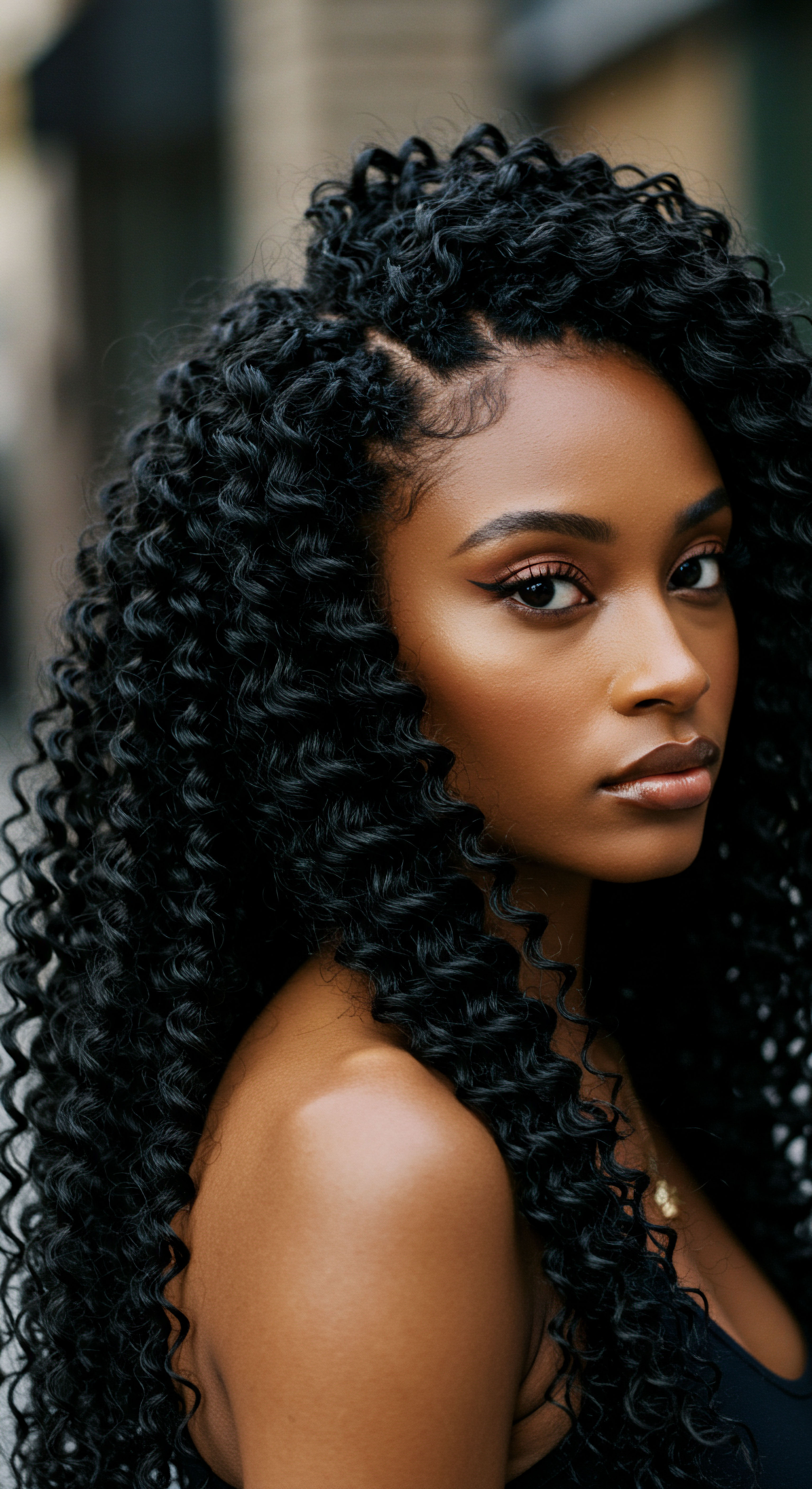
Reflection
As our exploration of plant proteins and textured hair draws to a close, we find ourselves standing at a quiet precipice, looking back at the rich landscape we have traversed. The whispers of ancient botanical wisdom, the precise language of scientific discovery, and the nurturing hand of holistic care have all contributed to our understanding. Our textured strands, each a unique testament to resilience and beauty, are not merely subjects of scientific inquiry but living expressions of heritage and self.
The true strength we seek for them lies not in a singular solution, but in a thoughtful, respectful dance with nature’s offerings, attuned to the delicate balance of their needs. This journey, ever unfolding, invites us to continue listening to our hair, learning from the earth, and celebrating the profound connection between the two.
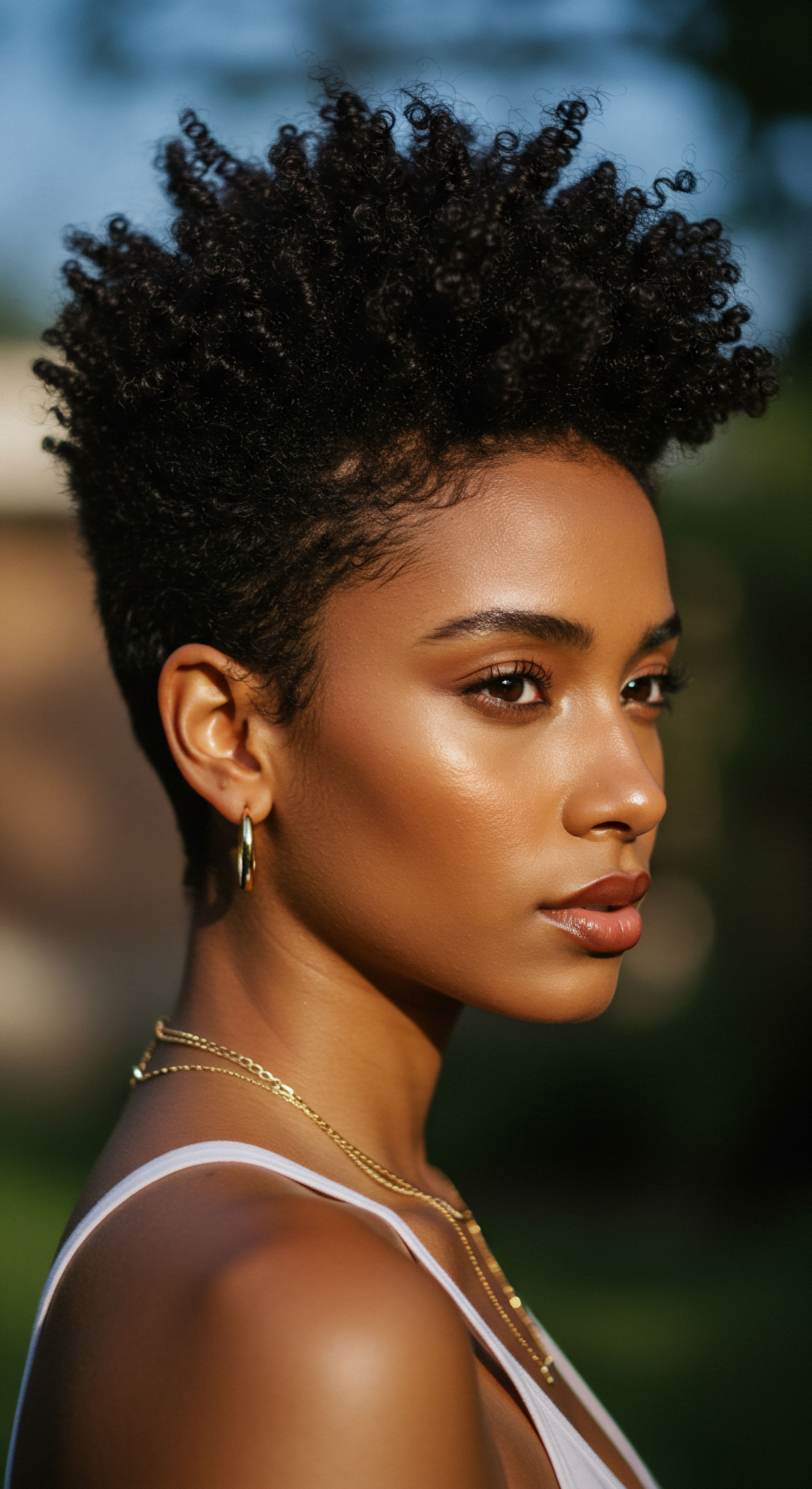
References
- cgproducten. (2020, March 1). Large Proteins & Small Proteins ❉ for whom? cgproducten. Retrieved from https://cgproducten.com/blogs/news/large-proteins-small-proteins-for-whom
- Wonder Curl. (2019, March 12). Talk Protein to me ❉ A Protein Guide for Natural Hair. Wonder Curl. Retrieved from https://wondercurl.com/blogs/news/protein-guide-for-natural-hair
- CG Curls. (2024, July 29). Comparing Different Proteins for Curly Hair. CG Curls. Retrieved from https://cgcurls.com/blogs/articles/comparing-different-proteins-for-curly-hair
- The Science Behind Bond Repair ❉ How Hydrolyzed Protein Can Transform Your Hair. (2024, September 5). The Science Behind Bond Repair ❉ How Hydrolyzed Protein Can Transform Your Hair. Retrieved from https://www.bondiboost.com/blogs/news/the-science-behind-bond-repair-how-hydrolyzed-protein-can-transform-your-hair
- Vilvah Store. (2024, August 6). Are Pea Protein And Hydrolyzed Keratin Good For Hair? Vilvah Store. Retrieved from https://vilvahstore.com/blogs/blog/are-pea-protein-and-hydrolyzed-keratin-good-for-hair
- Curlvana. Plant Protein ❉ Benefits, Uses, Side-Effects & More. Curlvana. Retrieved from https://curlvana.in/blogs/curlvana/plant-protein-benefits-uses-side-effects-more
- Corvus Beauty. (2024, September 29). Ancient Herbal Wisdom for Hair Care Rituals of Today. Corvus Beauty. Retrieved from https://corvusbeauty.com/blogs/news/ancient-herbal-wisdom-for-hair-care-rituals-of-today
- IMMIA Oil. (2023, May 24). The benefits of Corn proteins for hair. IMMIA Oil. Retrieved from https://immiaoil.com/blogs/news/the-benefits-of-corn-proteins-for-hair
- Clinikally. (2023, April 14). Hydrolyzed Proteins for Hair Repair and Nourishment. Clinikally. Retrieved from https://www.clinikally.com/blogs/news/hydrolyzed-proteins-for-hair-repair-and-nourishment
- Le-Nutra. (2025, April 30). Why Is Hydrolyzed Corn Protein Easy To Be Formulated Into Various Cosmetics? Le-Nutra. Retrieved from https://www.le-nutra.com/why-is-hydrolyzed-corn-protein-easy-to-be-formulated-into-various-cosmetics.
- MakingCosmetics Inc. Rice Quat by MakingCosmetics Inc. – Personal Care & Cosmetics – UL Prospector. UL Prospector. Retrieved from https://www.ulprospector.com/en/na/PersonalCare/Detail/4207/1169363/Rice-Quat
- RedenHair. (2018, May 28). Hydrolyzed corn protein. RedenHair. Retrieved from https://redenhair.com/blogs/news/hydrolysed-corn-protein
- The Mestiza Muse. (2023, September 13). Does High Porosity Hair Need Protein? The Mestiza Muse. Retrieved from https://themestizamuse.com/does-high-porosity-hair-need-protein/
- Rossano Ferretti UK. Hydrolyzed Soy Protein & Their Hair Benefits | Rossano Ferretti UK. Rossano Ferretti UK. Retrieved from https://www.rossanoferretti.com/blogs/the-art-of-hair/hydrolysed-soy-protein-hair-benefits
- Temptations Unlimited Salon. Silk Protein Conditioner – Temptations Unlimited Salon. Temptations Unlimited Salon. Retrieved from https://www.temptationsunlimitedsalon.com/product-page/silk-protein-conditioner
- Atlas Bar. Rebuilding Hair Protein with Soy ❉ Examining the Effects | Atlas Bar. Atlas Bar. Retrieved from https://atlasbar.com/blogs/articles/rebuilding-hair-protein-with-soy-examining-the-effects
- Nature Nuskha. Benefits of Pea Protein for Hair – Nature Nuskha. Nature Nuskha. Retrieved from https://naturenuskha.com/blogs/news/pea-protein-for-hair-benefits-of-pea-protein-for-hair
- Anwen Cosmetics. Protein Green Tea – a vegan hair conditioner with medium porosity – Anwen Cosmetics. Anwen Cosmetics. Retrieved from https://anwen.pl/en/product/protein-green-tea-a-vegan-hair-conditioner-with-medium-porosity/
- Curl Cult. Curl Cult Technology – We put the pea in perm. Curl Cult. Retrieved from https://curlcult.com/pages/technology
- Fabulive. Rediscovering Historical Hair Care Practices – Fabulive. Fabulive. Retrieved from https://fabulive.com/blogs/news/rediscovering-historical-hair-care-practices
- FullyVital. (2024, February 13). Soy Protein ❉ Plant-Based Power For Hair – FullyVital. FullyVital. Retrieved from https://fullyvital.com/blogs/hair-care/soy-protein-plant-based-power-for-hair
- Banyan Tree Essentials. (2019, June 19). The History of Hair Care – Banyan Tree Essentials. Banyan Tree Essentials. Retrieved from https://banyantreeessentials.com/blogs/blog/the-history-of-hair-care
- The Green Tribe. (2024, October 10). The Power of Tradition ❉ How the Tribes of Idukki Inspired Our Natural Hair Care Rituals. The Green Tribe. Retrieved from https://thegreentribe.co/blogs/news/the-power-of-tradition-how-the-tribes-of-idukki-inspired-our-natural-hair-care-rituals
- MDPI. Clinical Efficacy of Topical or Oral Soy Supplementation in Dermatology ❉ A Systematic Review – MDPI. MDPI. Retrieved from https://www.mdpi.com/2079-9284/10/3/67
- Cosmetics & Toiletries. (2013, May 31). Fluorescence LSCM to Assess the Penetration of Low Molecular Protein Hydrolyzates Into Hair | Cosmetics & Toiletries. Cosmetics & Toiletries. Retrieved from https://www.cosmeticsandtoiletries.com/research/hair-care/article/21836040/fluorescence-lscm-to-assess-the-penetration-of-low-molecular-protein-hydrolyzates-into-hair
- Orlando Pita Play. (2023, November 17). Haircare Rituals Around the World ❉ Exploring Global Traditions | Orlando Pita Play. Orlando Pita Play. Retrieved from https://orlandopitaplay.com/blogs/news/haircare-rituals-around-the-world-exploring-global-traditions
- Quora. (2019, January 4). How would adding keratin and/or proteins (such as hydrolyzed silk, oat, wheat, rice, or milk proteins) benefit hair in a conditioner? Quora. Retrieved from https://www.quora.com/How-would-adding-keratin-and-or-proteins-such-as-hydrolyzed-silk-oat-wheat-rice-or-milk-proteins-benefit-hair-in-a-conditioner
- Swift, J. A. Chahal, S. P. Challoner, N. I. & Parfrey, J. E. (2000). Investigations on the penetration of hydrolyzed wheat proteins into human hair by confocal laser-scanning fluorescence microscopy. Journal of Cosmetic Science, 51 (3), 193-203. Retrieved from https://www.researchgate.net/publication/242137084_Investigations_on_the_penetration_of_hydrolyzed_wheat_proteins_into_human_hair_by_confocal_laser-scanning_fluorescence_microscopy
- Pendlebury, R. & Bhoyroo, V. (2017, November 6). Penetration of different molecular weight hydrolysed keratins into hair fibres and their effects on the physical properties of textured hair. RSC Publishing Home. Retrieved from https://pubs.rsc.org/en/content/articlelanding/2017/ra/c7ra08390g
- FullyVital. (2024, March 22). Pea Protein For Hair ❉ The Plant-Powered Secret To Strong, Vibrant Lock – FullyVital. FullyVital. Retrieved from https://fullyvital.com/blogs/hair-care/pea-protein-for-hair-the-plant-powered-secret-to-strong-vibrant-lock
- ResearchGate. Investigations on the penetration of hydrolyzed wheat proteins into human hair by confocal laser-scanning fluorescence microscopy | Request PDF. ResearchGate. Retrieved from https://www.researchgate.net/publication/242137084_Investigations_on_the_penetration_of_hydrolyzed_wheat_proteins_into_human_hair_by_confocal_laser-scanning_fluorescence_microscopy
- MPB Research. More Evidence For Soy As A Hair Growth Agent | MPB Research. MPB Research. Retrieved from https://www.mpbresearch.com/blog/more-evidence-for-soy-as-a-hair-growth-agent/
- Park, H. Y. Kim, J. Y. & Lee, J. H. (2014). Hair Growth Promotion with Black Soybean Extracts ❉ case series. International Journal of Trichology, 6 (2), 69–72. Retrieved from https://pmc.ncbi.nlm.nih.gov/articles/PMC4229961/
- Google Patents. CA2981037C – Hair treatment compositions comprising hydrolyzed wheat protein and polyquaternium-6 – Google Patents. Google Patents. Retrieved from https://patents.google.com/patent/CA2981037C/en
- RSC Publishing Home. (2017, November 6). Changing the shape of hair with keratin peptides – RSC Publishing Home. RSC Publishing Home. Retrieved from https://pubs.rsc.org/en/content/articlelanding/2017/ra/c7ra08390g
- Healthline. (2021, March 1). Too Much Protein in Hair ❉ Causes, Effects, and More – Healthline. Healthline. Retrieved from https://www.healthline.com/health/too-much-protein-in-hair
- Halo Haircare Society. (2024, July 11). So you think your hair is sensitive to protein? – Halo Haircare Society. Halo Haircare Society. Retrieved from https://halohaircaresociety.com/blogs/hair-education/so-you-think-your-hair-is-sensitive-to-protein
- MDPI. (2023, April 30). Advances in Permeation of Solutes into Hair ❉ Influencing Factors and Theoretical Models. MDPI. Retrieved from https://www.mdpi.com/2073-4409/12/9/1346
- CurlyTools. (2024, June 15). Best hair products with protein – CurlyTools. CurlyTools. Retrieved from https://curlytools.com/blogs/news/best-hair-products-with-protein
- YouTube. (2014, June 2). Protein Digestion and Absorption – YouTube. YouTube. Retrieved from https://www.youtube.com/watch?v=g9x65w7nB_c
- Pattern Beauty. (2024, October 27). Is Your Natural Texture Experiencing Protein Overload? – Pattern Beauty. Pattern Beauty. Retrieved from https://patternbeauty.com/blogs/news/is-your-natural-texture-experiencing-protein-overload
- MDPI. A Narrative Review on Rice Proteins ❉ Current Scenario and Food Industrial Application. MDPI. Retrieved from https://www.mdpi.com/2304-8158/11/17/2645
- Medicine LibreTexts. (2020, August 13). 5.4 ❉ Protein Digestion, Absorption and Metabolism – Medicine LibreTexts. Medicine LibreTexts. Retrieved from https://med.libretexts.org/Bookshelves/Nutrition_and_Diet_Therapy/Nutrition_for_Health_and_Healthcare_(Smolin_and_Grosvenor)/05:_Proteins/5.04:_Protein_Digestion_Absorption_and_Metabolism
- Carol’s Daughter. (2023, November 15). How to Tell If Your Hair Is in Protein Overload – Carol’s Daughter. Carol’s Daughter. Retrieved from https://www.carolsdaughter.com/blog/hair-care/protein-overload.
- Living Proof. 101 Guide ❉ Protein Overload in Hair – Living Proof. Living Proof. Retrieved from https://www.livingproof.com/blog/protein-overload-in-hair/
- Good Health by Hims. (2025, February 4). Protein Overload in Hair ❉ Symptoms, Causes, and Treatment | Good Health by Hims. Good Health by Hims. Retrieved from https://www.forhims.com/blog/protein-overload-in-hair